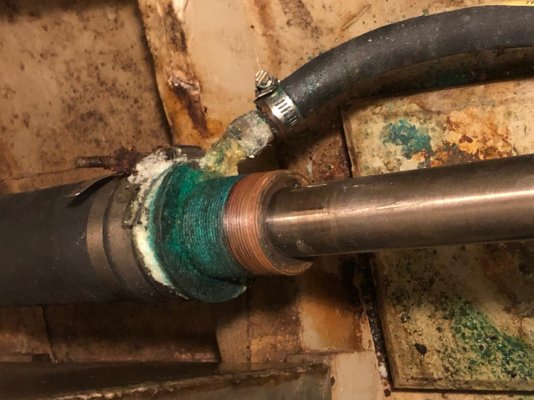Oil Gypsy
Veteran Member
- Joined
- Sep 25, 2019
- Messages
- 55
- Location
- Canada
- Vessel Name
- Dauntless
- Vessel Make
- Grand Banks 36 Classic #248
Hello,
I'm just about to haul my boat to change all the thru hull fittings, they are original, 50 years old and in very sad shape.
At the same time Im going to have to change the stern seals, again they are original and in similar condition to the thru hulls. I had to make a temporary repair to one of them when I bought the boat (the auxiliary water inlet was in such poor condition it broke off).
I would be interested in changing to Dripless Seals but as the original shaft seal have the auxiliary cooling inlet (supposedly to provide additional cooling and to ensure the water inside the prop shaft sleeve is changed to stop crevice corrosion) I'm wondering if this upgrade is possible / advisable.
If any other Grand Banks owners have made the conversion could you let me know how it worked out and if the removal of the auxiliary cooling inlet has resulted in cooling issues.
I'm just about to haul my boat to change all the thru hull fittings, they are original, 50 years old and in very sad shape.
At the same time Im going to have to change the stern seals, again they are original and in similar condition to the thru hulls. I had to make a temporary repair to one of them when I bought the boat (the auxiliary water inlet was in such poor condition it broke off).
I would be interested in changing to Dripless Seals but as the original shaft seal have the auxiliary cooling inlet (supposedly to provide additional cooling and to ensure the water inside the prop shaft sleeve is changed to stop crevice corrosion) I'm wondering if this upgrade is possible / advisable.
If any other Grand Banks owners have made the conversion could you let me know how it worked out and if the removal of the auxiliary cooling inlet has resulted in cooling issues.




